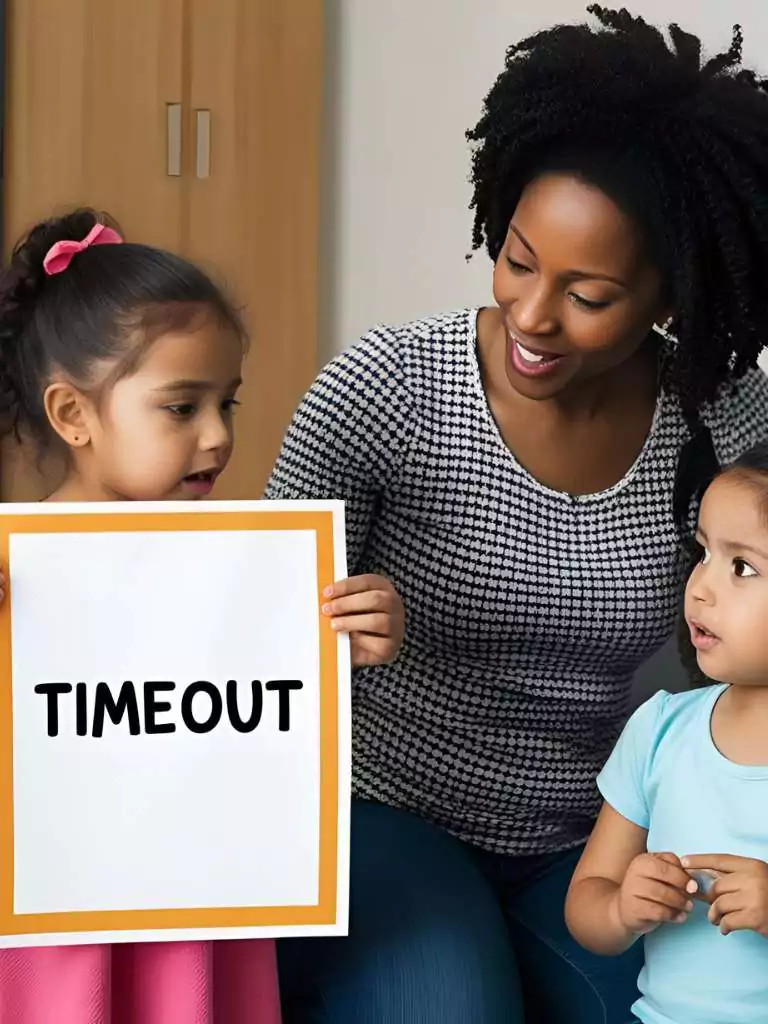As a parent, dealing with toddler tantrums can feel like a rollercoaster ride you didn’t sign up for. The sudden outbursts, the screaming, the kicking—it can be overwhelming.
But here’s the thing: tantrums are totally normal. They’re your toddler’s way of expressing big feelings that they don’t quite know how to handle yet.
But don’t worry, you’re not alone, and there are ways to handle these moments with patience and care. In today’s post, we’ll explore 12 simple, safe, and conscious ways to manage toddler tantrums.
These strategies will not only help you cope better with your toddler’s behavior problems, but they will also nurture emotional growth and guide your little one through those stormy moments.
1. Acknowledge Their Feelings
Before jumping to a solution, it’s vital to acknowledge your toddler’s emotions. When your child has a tantrum, they may not be able to express what they’re feeling.
By validating their feelings with phrases like, “I see you’re really upset,” or “I can tell you’re frustrated,” you show them that their feelings matter.
This simple act can help calm things down by letting your toddler know that they are heard and understood.
2. Use Distraction Techniques
Sometimes, the best way to handle a toddler meltdown is to distract them with something completely different. This could be a fun toy, a silly face, or even a change of scenery.
For example, if you’re dealing with a tantrum during bedtime, try redirecting their focus to their favorite bedtime story or a comforting bedtime routine.
A sudden change of direction might be all they need to shift gears and calm down.
3. Take a Deep Breath Together
When you’re feeling the heat of your toddler’s temper, it’s easy to feel frustrated or even angry. Instead of reacting in the heat of the moment, take a deep breath and encourage your child to do the same.
Teaching your toddler how to take slow, deep breaths can be a simple, yet powerful tool for managing emotions.
Plus, it’s a great way to model calmness and help them regulate their feelings.
4. Set Clear Boundaries
Setting boundaries is essential for toddler behavior management. When toddlers know what is and isn’t acceptable, they feel more secure.
Let your toddler know ahead of time what’s expected of them. For example, before heading out to a store, you can say, “We’ll be here for 10 minutes, and we’ll be leaving once we get the bread.”
This helps set expectations and reduces the likelihood of a tantrum when things don’t go their way.
5. Stay Calm and Collected
It’s easier said than done, but staying calm when your toddler is having a tantrum is one of the most effective ways to handle the situation.
Kids often mirror the emotional state of their parents. If you can remain calm, your child is more likely to mirror that behavior.
You don’t need to shout to make your point; instead, a calm voice can do wonders in regaining control.
6. Give Them a “Time-Out” from the Situation
Sometimes the best way to handle a tantrum is to give your toddler a break from the environment that’s causing the meltdown.
A quiet space where they can calm down can work wonders. This doesn’t have to be a formal “time-out” but more of a gentle break from whatever’s causing them distress.
It’s about helping them regain composure and come back to the situation with a calmer mindset.
7. Validate Their Need for Control
Toddlers are learning to assert their independence, and often tantrums arise because they feel powerless.
Giving your toddler some control over simple decisions can help reduce these outbursts. For example, offer two options: “Do you want to wear the red shirt or the blue one today?”
This allows them to feel empowered and reduces the likelihood of tantrums, especially over seemingly small things.
8. Offer Comfort and Reassurance
When a tantrum escalates, comfort can be the quickest way to help your child regain control. Sometimes, all they need is a hug or a soothing touch to remind them that everything is okay.
Let your toddler know you’re there for them, even when they’re upset. Your physical presence can be incredibly calming, and it reminds them that they’re safe, even in the midst of their big feelings.
9. Provide Consistent Routines
Consistency is key in toddler behavior problems. A predictable routine helps your toddler understand what to expect and when.
If you know that bedtime tantrums are a common issue, make sure to stick to the same bedtime routine every night.
This might include a bath, storytime, and some cuddles before lights out. The predictability of this process can reduce anxiety and minimize outbursts.
10. Use Positive Reinforcement
Instead of focusing on the tantrum itself, praise your toddler when they show positive behavior.
If your child is able to calm down on their own or express their feelings in a healthier way, make sure to acknowledge that with praise.
Simple affirmations like, “I’m so proud of you for using your words instead of crying,” can encourage your toddler to keep practicing those calm behaviors.
11. Model Emotional Regulation
One of the best ways to teach your toddler how to handle their emotions is by showing them how to do it yourself.
When you’re frustrated or upset, verbalize your feelings in a calm, controlled way. For instance, you might say, “I feel really frustrated right now because I can’t find my keys, but I’m going to take a deep breath and stay calm.”
This models healthy emotional regulation and gives your toddler a roadmap to follow.
12. Offer Choices Instead of Commands
Instead of issuing commands, which can feel limiting to a toddler, try offering them choices. This allows them to feel like they have some control over the situation.
For instance, if your toddler is having a meltdown over getting into the car, you can say, “Do you want to sit in the front seat or the back seat?”
This simple shift can often reduce the intensity of a tantrum by giving your toddler a sense of agency.
Conclusion
Handling toddler tantrums is no easy task, but with patience, understanding, and a bit of creativity, you can turn these challenging moments into opportunities for growth.
By using some of these 12 safe and conscious strategies, you’ll not only reduce the frequency of tantrums but also teach your child important life skills in emotional regulation.
Remember, tantrums are part of the journey, and you’re doing great. Keep your cool, stay consistent, and give your toddler the love and support they need to grow through it all.












